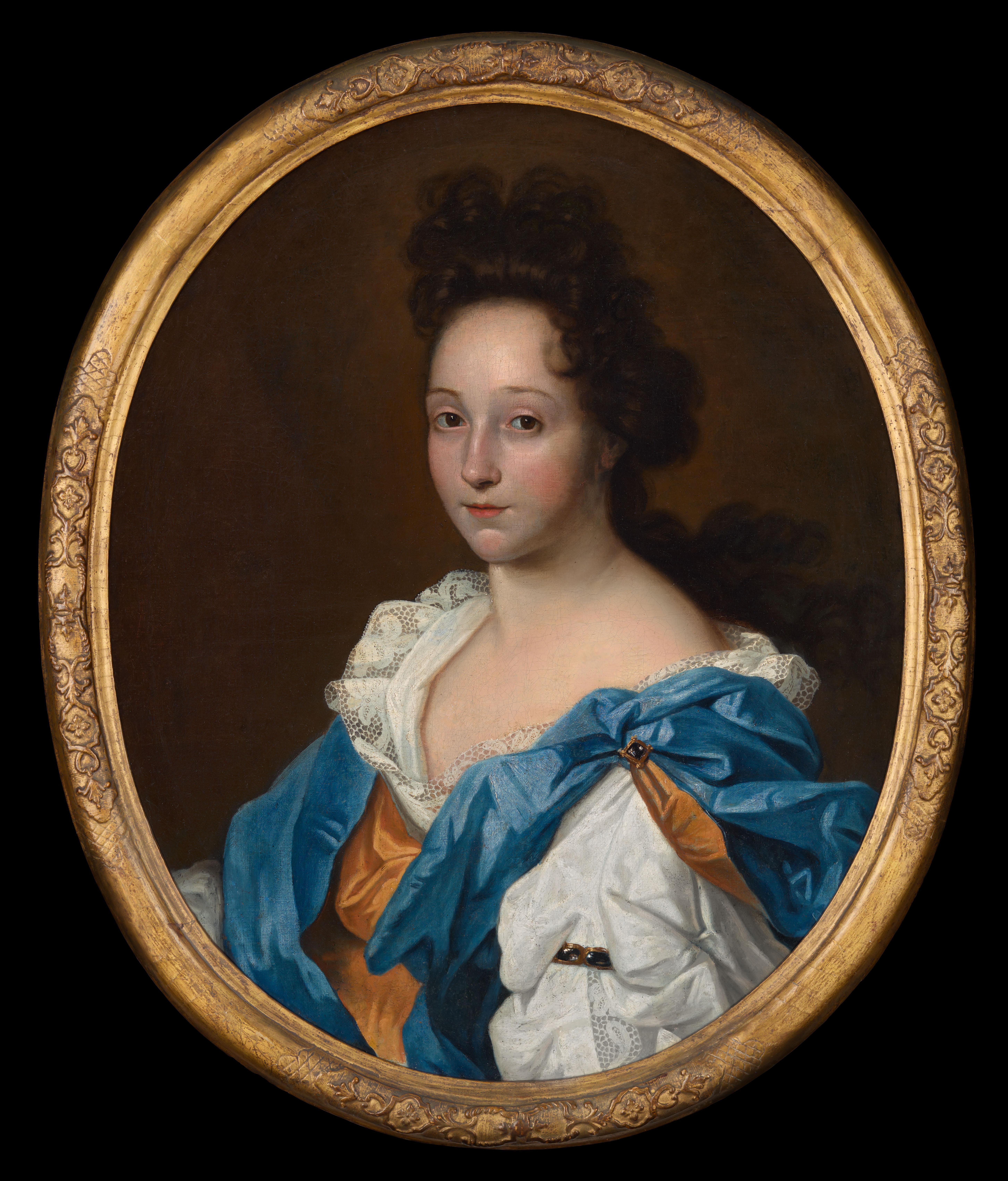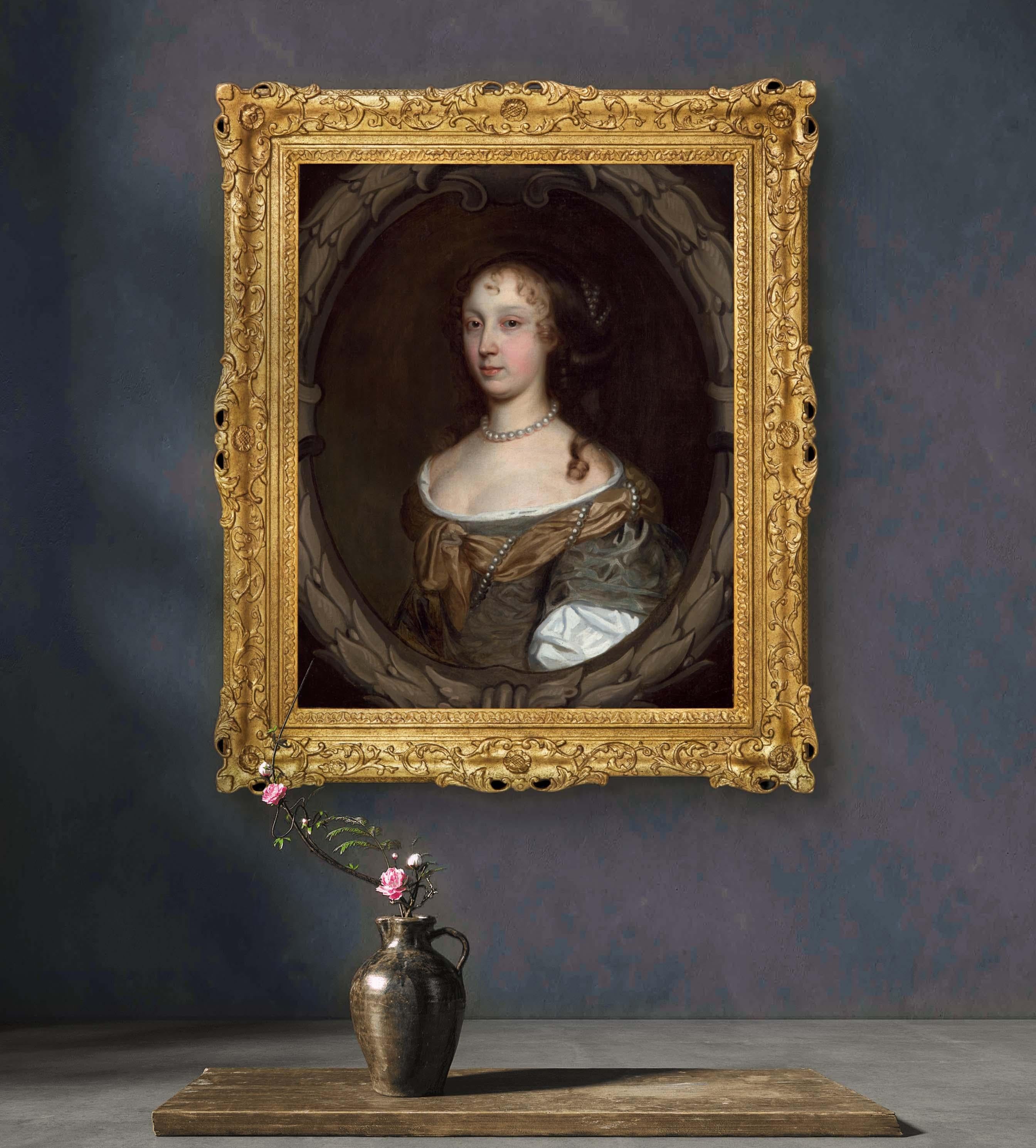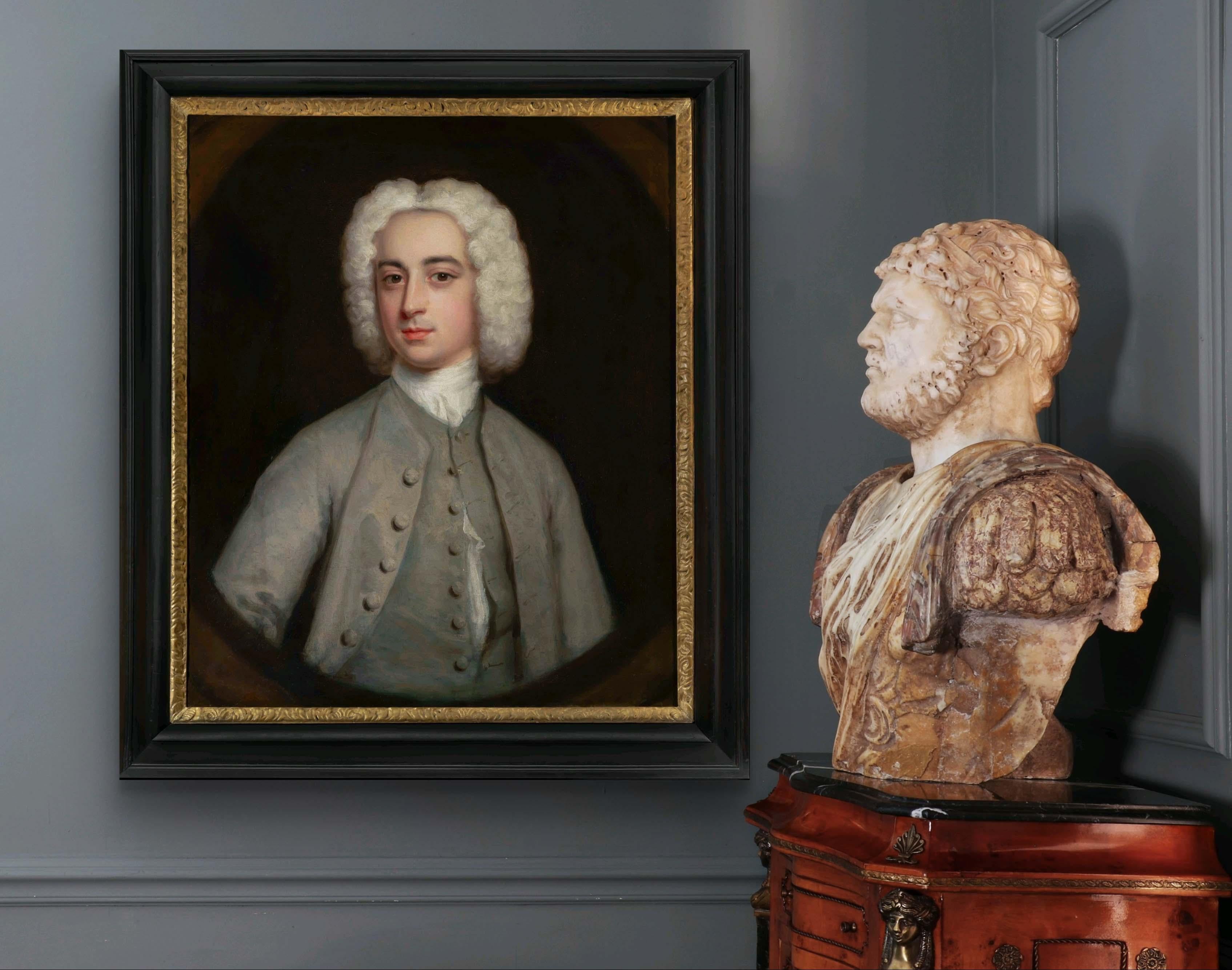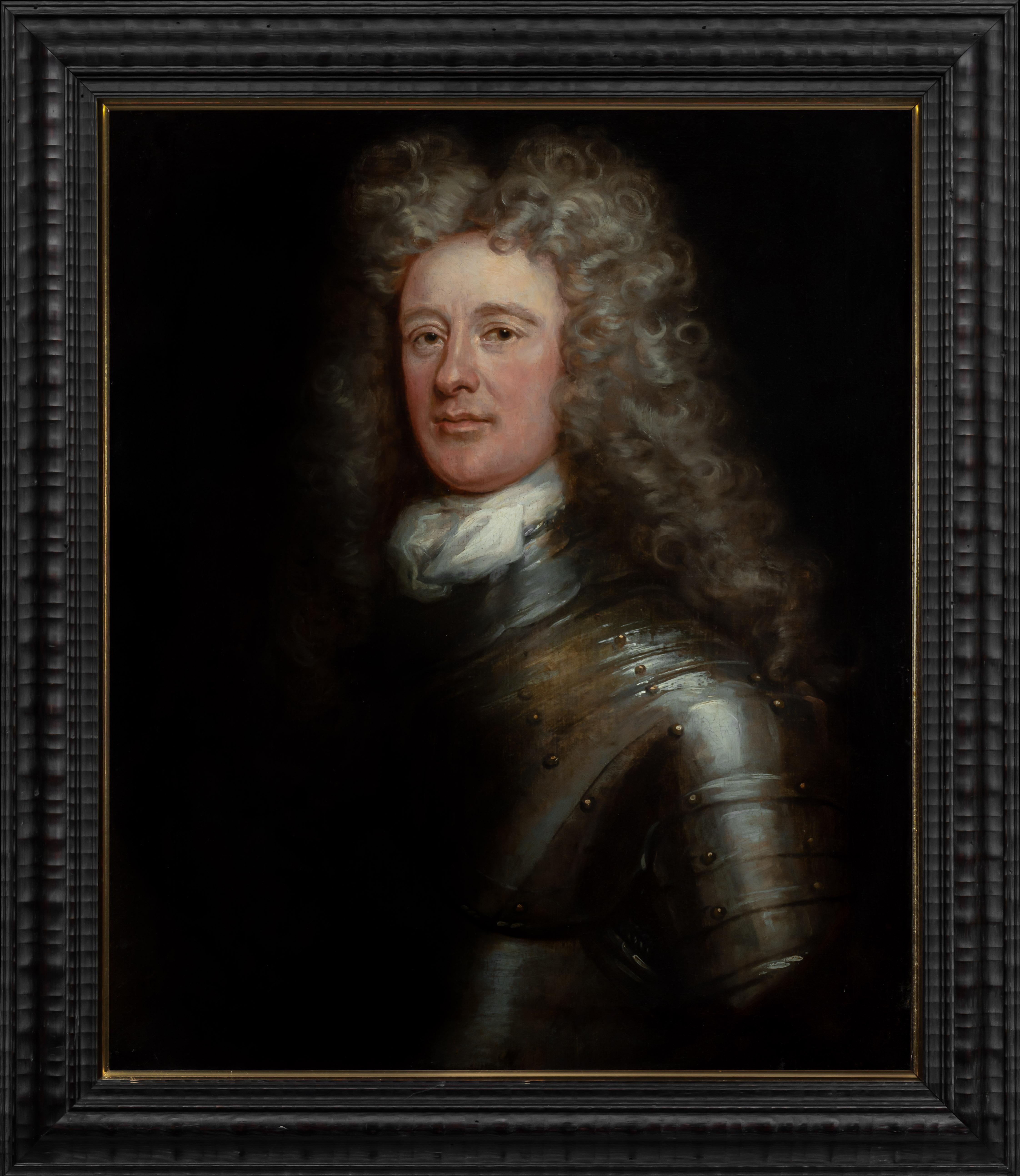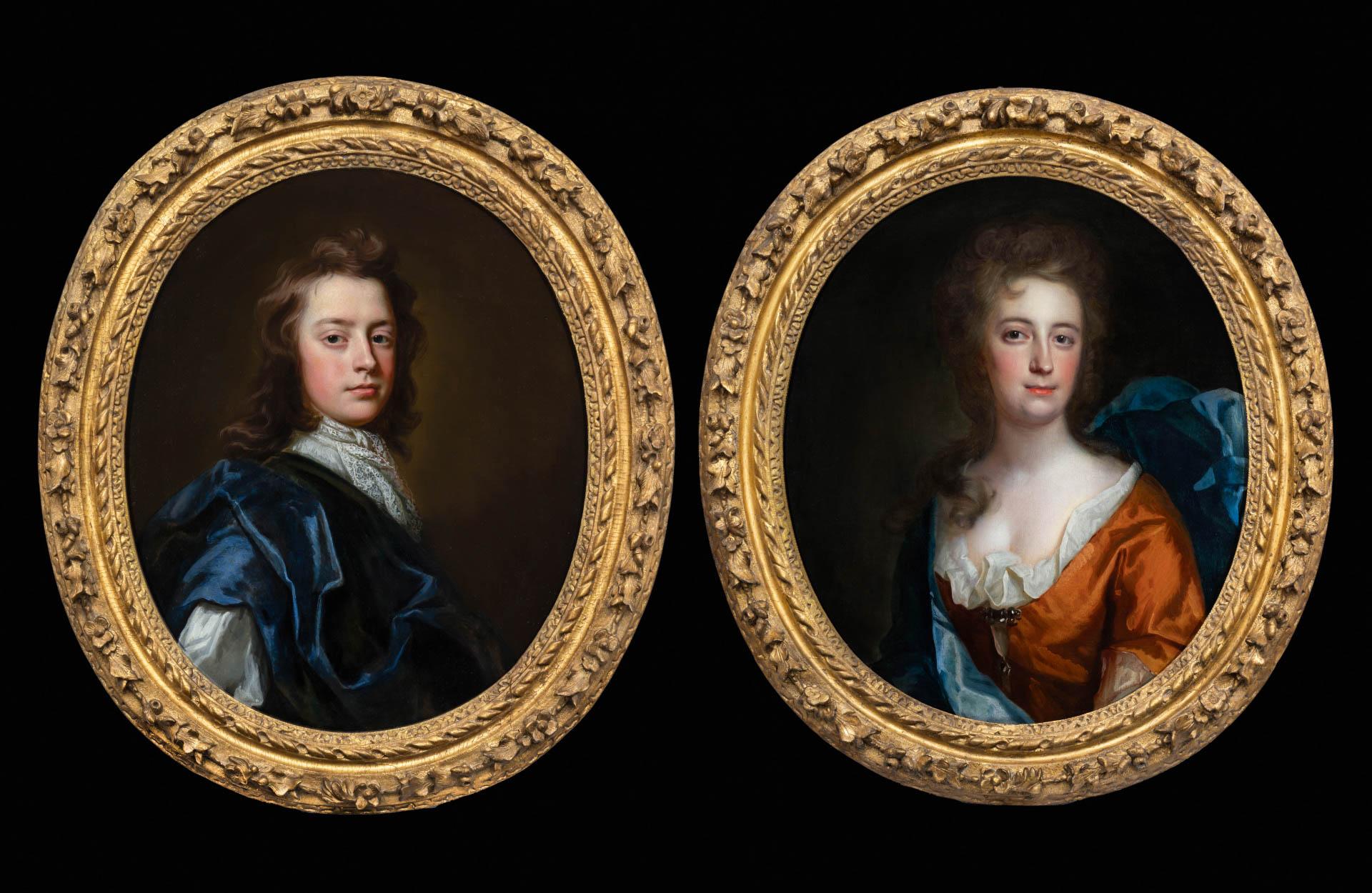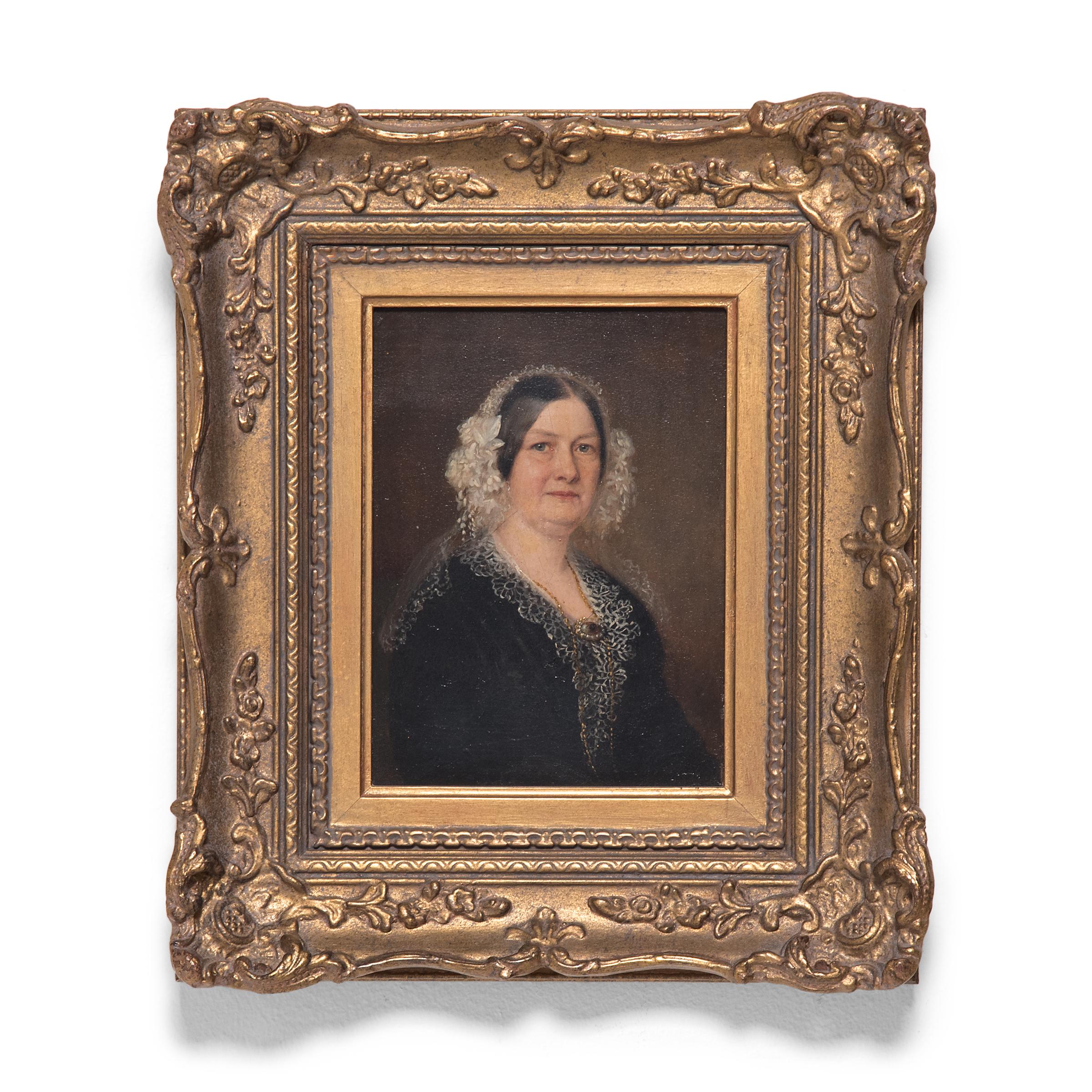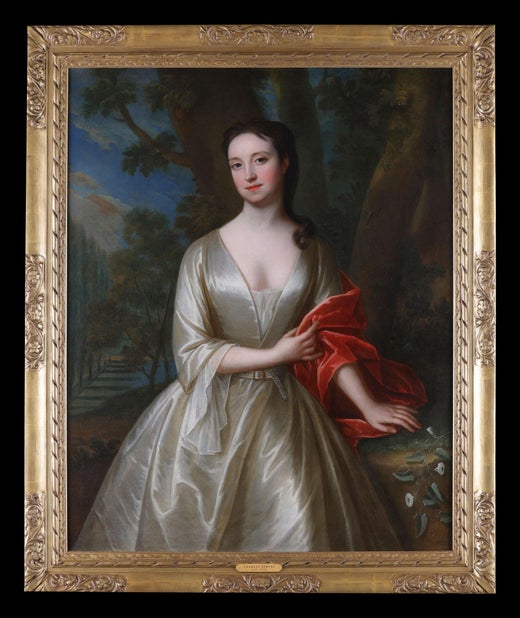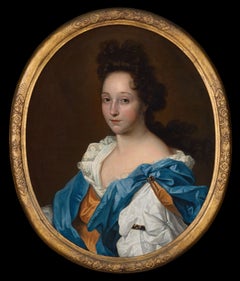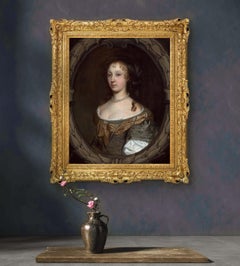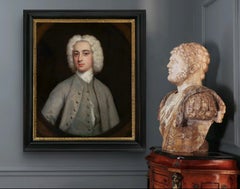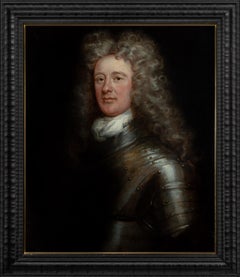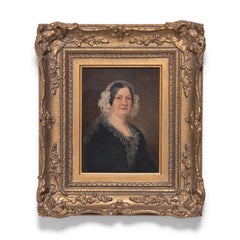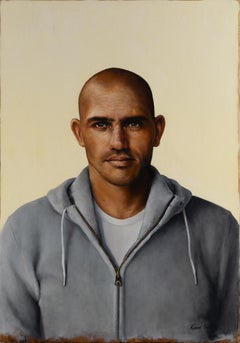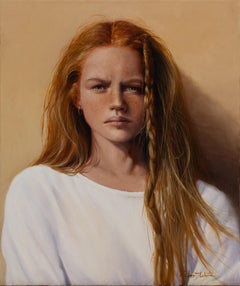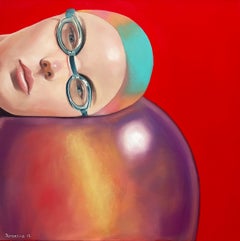Items Similar to Portrait of Frances, Viscountess Scudamore in a Silver Dress & Blue Cloak
Want more images or videos?
Request additional images or videos from the seller
1 of 9
Charles JervasPortrait of Frances, Viscountess Scudamore in a Silver Dress & Blue Cloakc.1709-1719
c.1709-1719
On Hold
$12,259.75
On Hold
£8,950
On Hold
€10,547.01
On Hold
CA$16,845.57
On Hold
A$18,853.36
On Hold
CHF 9,840
On Hold
MX$229,913.78
On Hold
NOK 125,938.66
On Hold
SEK 119,217.07
On Hold
DKK 78,710.95
Shipping
Retrieving quote...The 1stDibs Promise:
Authenticity Guarantee,
Money-Back Guarantee,
24-Hour Cancellation
About the Item
Portrait of Frances, Viscountess Scudamore in a Silver Dress and Blue Cloak c.1709-1719
By Charles Jervas (1675-1739)
This elegant and graceful portrait, presented by Titan Fine Art, was painted by Charles Jervas, who was in 1723 appointed to the post of King’s Painter by George I, and in 1725 to George II. Jervas was considered the supreme practitioner of female portraiture in the 1720s and 1730s and was the foremost successor to Sir Godfrey Kneller after the latter's death in 1723.
The sitter has been portrayed in a silver dress and an ermined-lined azure cape, seated beside a crown resting on a draped table. The subject is said to be Frances, Viscountess Scudamore (c.1684-1729). Born Francis Digby, she was the daughter of Simon Digby, 4th Baron Digby. Like so many other titled women at the early Georgian court who made prominent political marriages, she was an only surviving daughter who inherited a substantial part of her father's wealth, thus making the alliance an attractive and valuable business investment for the Scudamore family. It appears as though she was brought up in Coleshill, the house of her uncle William Digby, the 5th Baron Digby, and his wife Jane, as one of their own children, the couple also had four sons and eight daughters. In 1698, when she was fifteen, her uncle's cousin died and left him the estates concentrated around Sherborne Castle, in Dorset, a sprawling mansion originally built for Sir Walter Ralegh and greatly extended in the seventeenth century.
On 7th March 1706, our sitter married the English landowner and politician, James, 3rd Viscount Scudamore (c.1684-1716); her husband was her exact contemporary in age. The couple must have removed to Holme Lacy, the substantial estates in Herefordshire that the 3rd Viscount had inherited, along with the title, in 1697. Four years later, in 1710, Lady Scudamore's husband nearly died from injuries relating to a horrible fall from his horse, and after he recovered, he was noticeably intellectually disabled. He did succumb, likely to complications attendant on his accident, on 2 December 1716. The Dowager Viscountess appears to have withdrawn to Twickenham, the bohemian suburb on the upper banks of the Thames favoured by the nobility, and there immersed herself in literary society, introducing Alexander Pope to her uncle and entertaining Pope, John Gay and the playwright Thomas Southerne from time-to-time at Holme Lacy. Lady Scudamore died in 1729.
The couple had one daughter Frances (1711–c.1750), who married Henry Somerset, 3rd Duke of Beaufort, who divorced her in 1743 for adultery with William Talbot, 1st Earl Talbot. She remarried to Charles FitzRoy-Scudamore, the illegitimate son of the 1st Duke of Grafton, and the couple had one daughter Frances (1750–1820), who married Charles Howard, 11th Duke of Norfolk - this marriage produced no heirs and eventually the Scudamore property reverted to a collateral descendant of the 1st Viscount.
The sitter appears to be around 25 to 35 years of age, and based on the stye of clothing and hair, and the Viscountess’ crown, the portrait was most likely painted between 1709, when Jervas returned to London, and 1719, the year of Lord Scudamor’s death.
Charles Jervas was born in Clonliske in Kings Country, Ireland in 1675. He received his artistic training in Kneller’s studio and was later, by the 1690’s, Kneller’s assistant. According to George Vertue, Jervas made small copies of the Raphael cartoons, then at Hampton Court, in about 1698 and sold them to raised funds to embark on the essential ‘grand tour’ of Europe in 1699. Taking in Paris and settling in Rome by 1703, he was known as “Carlo Jervasi” and was a “good, engenious painter”. On his return to London in 1709 Tatler (15th April 1709) remarked that he was 'the last great painter Italy has sent us' and noted that he “painted many ladies as shepherdesses and country girls”. The style that he cultivated made him Kneller's natural successor when that artist died in 1723.
In 1727 he married a widow, Penelope Hume, a lady of considerable means (£20,000). In September 1738 he travelled to Italy seeking some reprieve from his asthma, returning in May 1739. He died in November that year and the in following spring his considerable art collection was sold in 2265 lots in a sale lasting 9 days.
Apart from royalty Jervas gained the patronage of many of the ruling and intellectual elite. He moved in the highest circles of the literary and social world and became an intimate of Sir Robert Walpole and the poet Alexander Pope, to whom he gave drawing lessons.
Jervas’ portrait of Elizabeth Felton, of Playford, Later Countess of Bristol (1677-1741) realised £45,410 at Christies London 11th June 2002, lot 13. His portrait of Lady Barbara North realised £42,050 at Christies London 11th July 2008, lot 55.
Measurements: Height 148cm, Width 122cm framed (Height 58.25”, Width 48” framed
- Creator:Charles Jervas (1670 - 1739, Irish)
- Creation Year:c.1709-1719
- Dimensions:Height: 58.27 in (148 cm)Width: 48.04 in (122 cm)Depth: 3.15 in (8 cm)
- Medium:
- Movement & Style:
- Period:
- Condition:This painting has passed a strict quality and condition assessment by a professional conservator prior to going on sale. It can be hung and enjoyed immediately.
- Gallery Location:London, GB
- Reference Number:1stDibs: LU1199115723772
Charles Jervas
Charles Jervas was born in Dublin in 1675 who later lived in England. After moving to England, Jervas became an apprentice to the painter Sir Godfrey Kneller. He later studied drawing in Rome and then returned (c. 1709) to England. Succeeding Kneller, he became court painter to the English kings George I and George II. His home became a centre for literary figures, among them Alexander Pope and Jonathan Swift, whose portraits Jervas painted, in addition to that of George II (1728). He produced a translation of Miguel de Cervantes’s Don Quixote (published posthumously, with his surname spelled Jarvis, in 1742).
About the Seller
5.0
Gold Seller
Premium sellers maintaining a 4.3+ rating and 24-hour response times
Established in 1998
1stDibs seller since 2019
44 sales on 1stDibs
Typical response time: 5 hours
- ShippingRetrieving quote...Shipping from: London, United Kingdom
- Return Policy
Authenticity Guarantee
In the unlikely event there’s an issue with an item’s authenticity, contact us within 1 year for a full refund. DetailsMoney-Back Guarantee
If your item is not as described, is damaged in transit, or does not arrive, contact us within 7 days for a full refund. Details24-Hour Cancellation
You have a 24-hour grace period in which to reconsider your purchase, with no questions asked.Vetted Professional Sellers
Our world-class sellers must adhere to strict standards for service and quality, maintaining the integrity of our listings.Price-Match Guarantee
If you find that a seller listed the same item for a lower price elsewhere, we’ll match it.Trusted Global Delivery
Our best-in-class carrier network provides specialized shipping options worldwide, including custom delivery.More From This Seller
View AllPortrait of a Lady in White Chemise, Russet & Blue Drapery c.1695, Oil Painting
By Harman Verelst
Located in London, GB
This lavish portrait, painted circa 1695, is an exquisite example of the type of portrait in vogue during the last quarter of the seventeenth century. It is evident that the artist ...
Category
17th Century Old Masters Portrait Paintings
Materials
Canvas, Oil
Portrait of a Lady in Green Dress & Pearl Jewellery c.1660 Painting John Wright
By John Michael Wright
Located in London, GB
In this exquisite work, painted around the time of the Great Fire of London in 1666, a beautiful young woman is wearing a green dress over a white chemise and a russet-coloured scarf...
Category
17th Century Old Masters Portrait Paintings
Materials
Canvas, Oil
Portrait of a Gentleman in Grey Coat & White Cravat, Oil on canvas Painting
Located in London, GB
This exquisite work, presented by Titan Fine Art, is by the notable artist Hans Hysing, who was a noteworthy painter in England; it is significant in its q...
Category
18th Century Old Masters Portrait Paintings
Materials
Canvas, Oil
Portrait of a Gentleman, David Erskine, 13th Laird of Dun, Wearing Armour c.1700
Located in London, GB
The gentleman in this exquisite oil on canvas portrait, presented by Titan Fine Art, is shown with the grandiloquence characteristic of the English School of painting. He is portray...
Category
17th Century Old Masters Portrait Paintings
Materials
Oil, Canvas
Portrait of Gentleman Blue & Cloak, Portrait of Lady, Fine Carved Gilded frames
Located in London, GB
Portrait of a Gentleman with Blue Cloak and Portrait of a Lady in Russet Dress c.1697
Thomas Murray (1663-1735)
These fascinating portraits are exquisite examples of portraiture in ...
Category
17th Century Old Masters Portrait Paintings
Materials
Oil, Canvas
Dutch Old Master Portrait of Maurits, Prince of Orange-Nassau, Oil on Panel
Located in London, GB
In 1607, the Delft city council decided to commission a portrait of Stadholder Maurits of Nassau for the town hall, with Michiel van Mierevelt as the chosen artist due to the passing...
Category
17th Century Old Masters Portrait Paintings
Materials
Oil, Wood Panel
You May Also Like
Oil Portrait of a Victorian Lady, c. 1850
Located in Chicago, IL
Painted in the 19th century, this exquisite miniature portrait wonderfully exemplifies realism in traditional oil painting. The small artwork is painted in the conventional portraiture style of the Old Masters, and achieves soft realism with fine brushwork and a subdued, neutral palette. The half length portrait depicts a fine Victorian woman dressed in all black with a delicate lace collar and bonnet. She wears a ruby broach...
Category
Mid-19th Century Old Masters More Art
Materials
Oil
Robert K. White "Kelly Slater" Oil on Canvas, Realist Portrait of Surf Legend
Located in Miami, FL
ROBERT KENNETH WHITE – "KELLY SLATER"
Oil on Canvas ⚜ Hand Signed Lower Right ⚜ Frameless Display
A PORTRAIT OF FOCUS, LEGACY, AND DEPTH
Rendered with near-photographic precision, ...
Category
2010s Realist Portrait Paintings
Materials
Canvas, Oil
Robert K. White "Girl with Red Hair" Signed Oil, Contemporary Realist Portrait
Located in Miami, FL
ROBERT KENNETH WHITE – "GIRL WITH RED HAIR"
Oil on Canvas ⚜ Hand Signed Lower Right ⚜ Frameless Display
A PORTRAIT STUDY OF STRENGTH AND INTROSPECTION
In this emotionally charged p...
Category
2010s Realist Portrait Paintings
Materials
Canvas, Oil
"The Shining 2" - Colorful Female Figurative Swimmer Portrait Painting
Located in West Hollywood, CA
This 36 inch square original oil painting on canvas is wired and ready to hang. The detail in this artwork is astounding. The crimson red tones make the female swimmers portrait real...
Category
2010s Contemporary Portrait Paintings
Materials
Canvas, Oil
"Army of Snorkelers" - Mirrored Female Swimmer Portrait Painting
Located in West Hollywood, CA
This large horizontal 37 inch high and 76 inch wide original oil painting on canvas is wired and ready to hang. The detail in this artwork is astounding. The crimson red tones make t...
Category
2010s Contemporary Portrait Paintings
Materials
Canvas, Oil
European Portrait of a Priest
Located in Milford, NH
A fine European portrait of a priest, oil on canvas, probably dating to the 17th or 18th century, unsigned, with original stretcher, minor surface losses and damage, craquelure, edge...
Category
17th Century Portrait Paintings
Materials
Canvas, Oil
More Ways To Browse
18th Century English Portrait
Charles Gaines
Alexander James
James A Rome
Gay Portrait
James Castle
Mansion House
Raphael Paris Paintings
4th Of July
Alexander King
Thomas Alexander
15th Century Italian Painting
Antique Georgian Portrait
Thomas Crown
Thomas Earl
The Shepherdess
Charles Howard Artist
King William Silver
